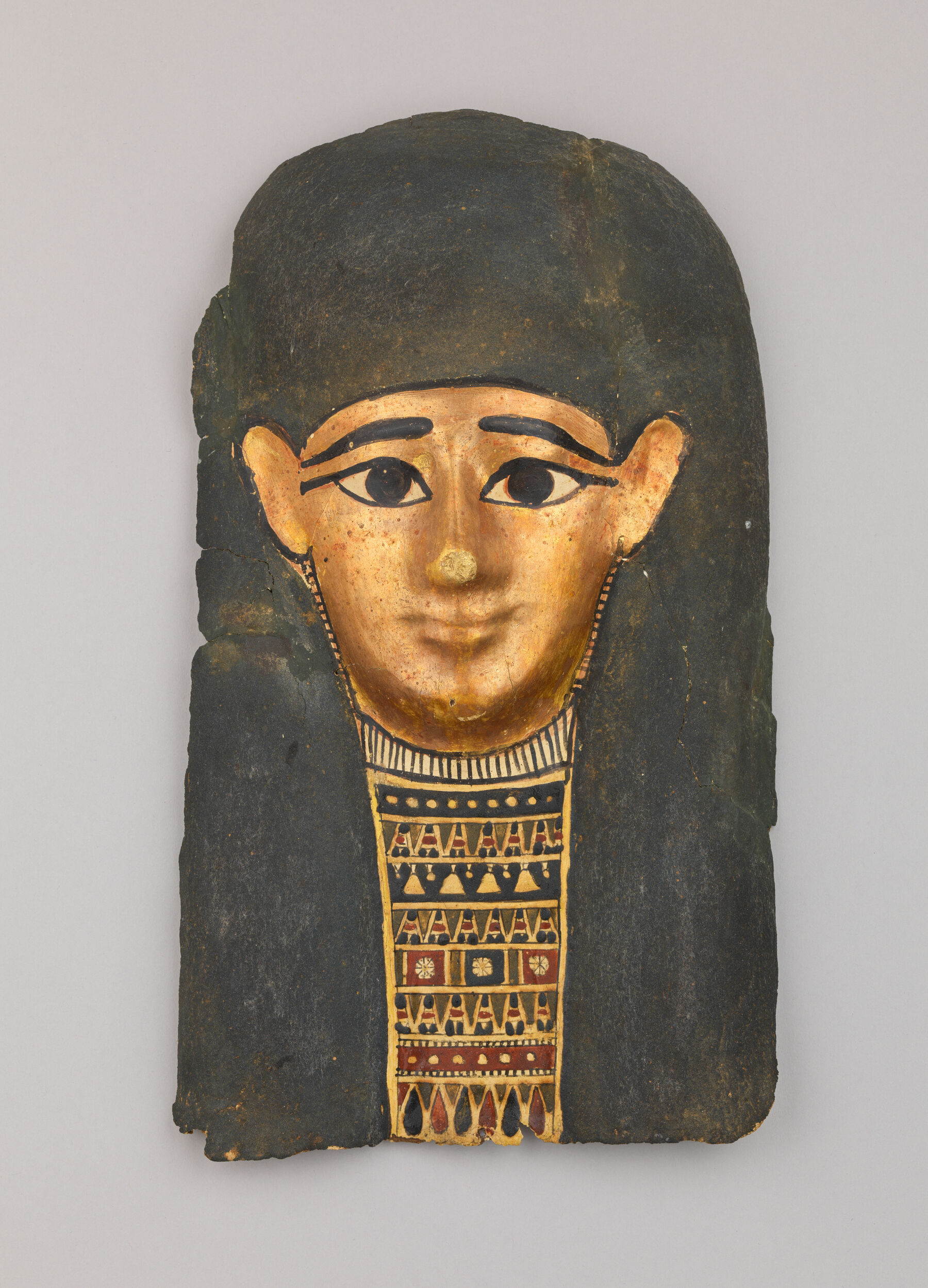A cartonnage mask protected the head of the mummified body. If the head was lost or damaged, the masks ensured the deceased could be whole. Cartonnage masks were composed of layers of linen or papyrus, plaster, and glue that were molded, brightly painted, and often gilded. The basic mask components could vary based on shape, size, time, and place. Gilded cartonnage masks are not portraits but display the owner as a divine being with golden skin.
The mask depicts the deceased wearing a tripartite blue wig and a broad collar with eight rows of floral and foliate beads. The eyes, eyebrows, and pupils are painted black. The gilded face symbolizes the owner’s transformed state in the afterlife.1 Similar masks come from the sites of Abusir el-Meleq and Atfih near the Faiyum and reflect the Herakleopolitan style of the period.2
MH
-
Taylor, John H. 2001 “Patterns of colouring on ancient Egyptian coffins from the New Kingdom to the Twenty-sixth Dynasty: an overview.” In Colour and painting in ancient Egypt, edited by W.V. Davies, 164–181. London: British Museum Press.. ↩︎
-
Jonathan Elias, pers. comm. See also Vandenbeusch, Marie, Daniel O’Flynn, and Benjamin Moreno. 2021. “Layer by layer: the manufacture of Graeco-Roman funerary masks.” JEA 107 (1-2): 281–298. https://doi.org/10.1177/03075133211050657. ↩︎
Bibliography
- Taylor 2001
- Taylor, John H. 2001 “Patterns of colouring on ancient Egyptian coffins from the New Kingdom to the Twenty-sixth Dynasty: an overview.” In Colour and painting in ancient Egypt, edited by W.V. Davies, 164–181. London: British Museum Press.
- Vandenbeusch, O’Flynn, and Moreno 2021
- Vandenbeusch, Marie, Daniel O'Flynn, and Benjamin Moreno. 2021. “Layer by layer: the manufacture of Graeco-Roman funerary masks.” JEA 107 (1-2): 281–298. https://doi.org/10.1177/03075133211050657
